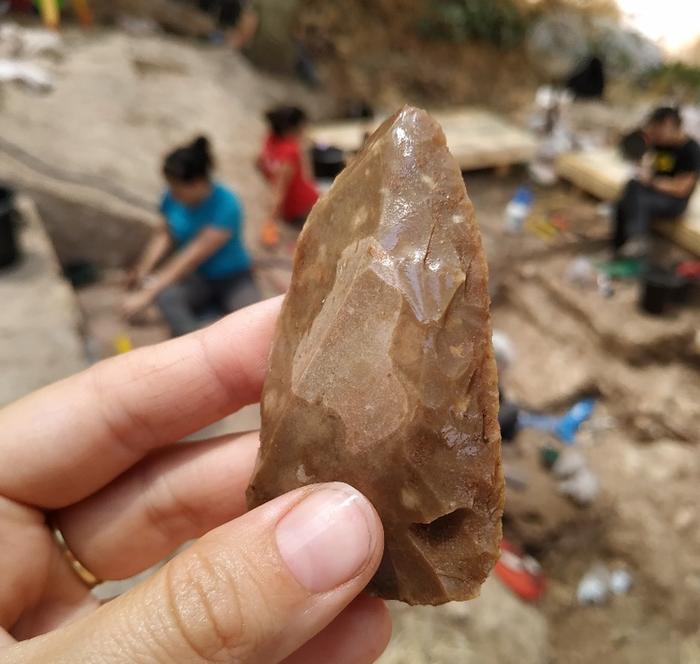Around 100,000 years ago, a group of Homo sapiens-like humans buried five of their dead at Timshenet cave, along with grave goods consisting of animal remains and chunks of red ochre. At the same time, neighboring tribes of archaic hominids – including some that were more Neanderthal-like in appearance – adopted similar customs, all of which suggests that these prehistoric populations may have exchanged cultural ideas and technologies to create a unified set of habits, traditions, and practices.
ADVERTISEMENT
Presenting their findings from Timshenet cave, the authors of a new study reveal that these differing human clans also used the exact same hunting strategies and tool-making methods. Taken together, these discoveries indicate that as Homo Sapiens and Neanderthals met and mingled in the Levant, a single shared culture arose long before the emergence of a biologically homogenous population.
“Most of the hominins that we see during this period of time are hybrids,” study author Professor Yossi Zaidner told IFLScience. “They have a uniform culture because they learn from each other, but they’re coming from different genetic pools or biological groups, which are mixed together here.”
It’s here in the Levant that the world’s oldest human burials have been discovered, with graves at sites in what is now modern-day Israel such as Qafzeh, Skhul, Tabun, and Nesher Ramla dated to between 100,000 and 110,000 years ago. Disagreements persist over which species occupied each site, although the Qafzeh and Skhul specimens are generally seen as being more Homo sapiens than Neanderthal while the Nesher Ramla remains show a mix of traits from both lineages.
The Tabun skeletons, meanwhile, represent a Neanderthal or pre-Neanderthal population, while the newly discovered Tinshemet individuals have been tentatively characterized as Homo sapiens-ish pending further analysis.
Tellingly, the new study reveals that the stone technologies found at Tinshemet conform to the centripetal Levallois industry, thus matching the lithic traditions at all of the other nearby sites. “We only see this specific type of stone tool production technology during this period of time. We don’t have it before,” says Zaidner. “And it occurs across all the sites, regardless of whether [the makers had] more archaic Homo sapiens features or more Neanderthal features.”
ADVERTISEMENT
What’s more, Zaidner explains that the centripetal Levallois technology refers to “a process of production” rather than just the nature of the finished tools, which means the sequence itself had to be learned via cultural transmission.

The stone tools at Tinshemet cave were produced using the same method as those from other nearby sites.
Image credit: Marion Prévost
At the same time, animal remains from all of the sites suggest that the Levantine hominids of the mid-Middle Palaeolithic differed from earlier and later humans in that they focused specifically on hunting large herbivores such as aurochs and horses. Moreover, the study authors write that “The cultural responses to death were similar” across all of the sites.
“All three sites show remarkable similarities in how people disposed of their dead. These characteristics include the highly flexed position of the deceased and the placement of various objects inside the grave, including animal remains and chunks of ochre,” they continue.
Given that funerary practices and the use of ochre are both seen as proxies for the development of symbolic thought in prehistoric humans, the presence of these elements at the various caves suggests that interactions between the different populations may have driven the emergence of complex social behaviors and customs.
ADVERTISEMENT
“It’s important that [these practices] occur only in the Levant and only during this period of time,” says Zaidner. “We don’t have it before and we don’t have it later. So taking together all these four aspects, we see a clear behavioral uniformity [across all the sites],” he adds.
Ultimately, these findings help to shed new light on the ways in which differing Homo lineages interacted during the Middle Palaeolithic, suggesting that they not only co-existed but actively shared ideas, technologies, and practices.
The study is published in the journal Nature Human Behaviour.
Source Link: World’s Oldest Human Burials Show Neanderthals And Homo Sapiens Shared Culture And Technology